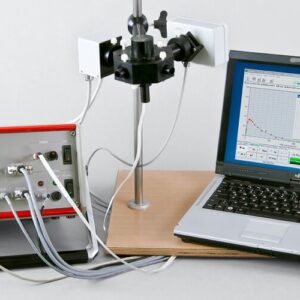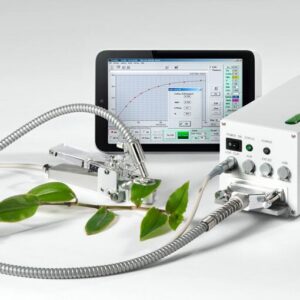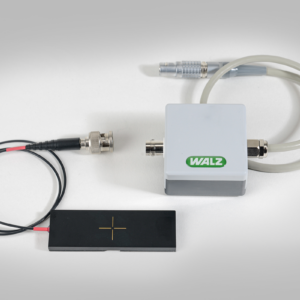Code: W005
The IMAGING-PAM family comprises the versions MAXI, MINI and MICROSCOPY. The different versions employ the same Multi Control Unit IMAG-CG. Also, the same camera can be used for different versions. This modularity permits easy and most cost-effective switching between various applications and magnifications provided by the IMAGING-PAM M-Series.
The MAXI and MINI versions can be combined with the Gas-Exchange System GFS-3000 and, thus, integrates detailed spatial information on photosynthesis with exact analysis of photosynthetic carbon fixation.
Most recently, an advanced method to create three-dimensional plant images has been added to the MAXI version. This new configuration opens the way to project data of fluorescence analysis on the three-dimensional plant image so that photosynthesis can be analyzed in the context of whole plant architecture.
Chlorophyll Fluorescence and PAM Fluorometry
Chlorophyll fluorescence is a very sensitive indicator of photosynthesis. Quantitative information on the quantum yield of photosynthetic energy conversion is obtained by PAM fluorometry and the saturation pulse method (Schreiber U (2004) Pulse-Amplitude-Modulation (PAM) Fluorometry and Saturation Pulse Method: An Overview, pp. 279-319. Kluwer Academic Publishers, Dordrecht, The Netherlands).
A wide range of photosynthetic parameters can be derived from fluorescence measurements, giving insight into the physiological state of all photosynthetically active organisms, including higher plants, mosses and ferns as well as various types of algae, phytoplankton and biofilms.
Chlorophyll Fluorescence Imaging
With the advance of highly sensitive CCD cameras and extremely strong light emitting diodes (LED) development of IMAGING-PAM fluorometers has become possible that not only measure images of chlorophyll fluorescence but are also fully competent in providing all relevant chlorophyll fluorescence parameters using the saturation pulse method. In this way, images of photosynthetic activity and its spatio-temporal variations can be obtained.
All IMAGING-PAM fluorometers provide images for 17 different parameters. The fluorescence parameter Ft is continuously monitored. Fo and Fm are assessed after dark adaptation, serving as reference for fluorescence quenching analysis by the saturation pulse method.
Besides Fv/Fm, the PS II quantum yield after dark acclimation, also the PS II quantum yield during illumination, Y(II), and the quantum yields of regulated and non-regulated energy dissipation, Y(NPQ), Y(NO) as well as the apparent electron transport rate (ETR and PS) can be imaged.
A routine for measuring a PAR-absorptivity image is provided for the MAXI and the MINI version of the IMAGING-PAM (Abs.-image based on images of NIR and red light remission). From this parameter also the apparent rate of photosynthesis is calculated and does not need to use the commonly known PAR-absorptivity mean value of 0.84 (ETR) for all areas anymore.
The parameter PS/50 is displayed in order to depict the apparent photosynthesis with the help of the false color code that is also used for the other photosynthesis parameters.
Measuring heads can also be equipped with special LEDs and filter sets for imaging fluorescence from reporter molecules like GFP. The use of power LEDs allows actinic intensities of up to 5000 μmol m-2 s-1 (depending on the M-Series member and configuration).
For the measurement of suspensions additional filter plates are available enhancing the image quality even with reflective surfaces. For PSII measurements under ambient light conditions also the communication with our Universal Light Meter ULM-500 is possible, so that real time light values directly can be taken over to the IMAGING-PAM report file.
For the combination of different measuring techniques like e.g. gas exchange, adapters are available so that PSII imaging can be performed under climate control combined also.
Outstanding Properties of the IMAGING-PAM family
-Homogeneous illumination of measured area
-Cost efficiency due to modular design
-Remote control interface for automation
-Accessories for countless applications










Reviews
There are no reviews yet.